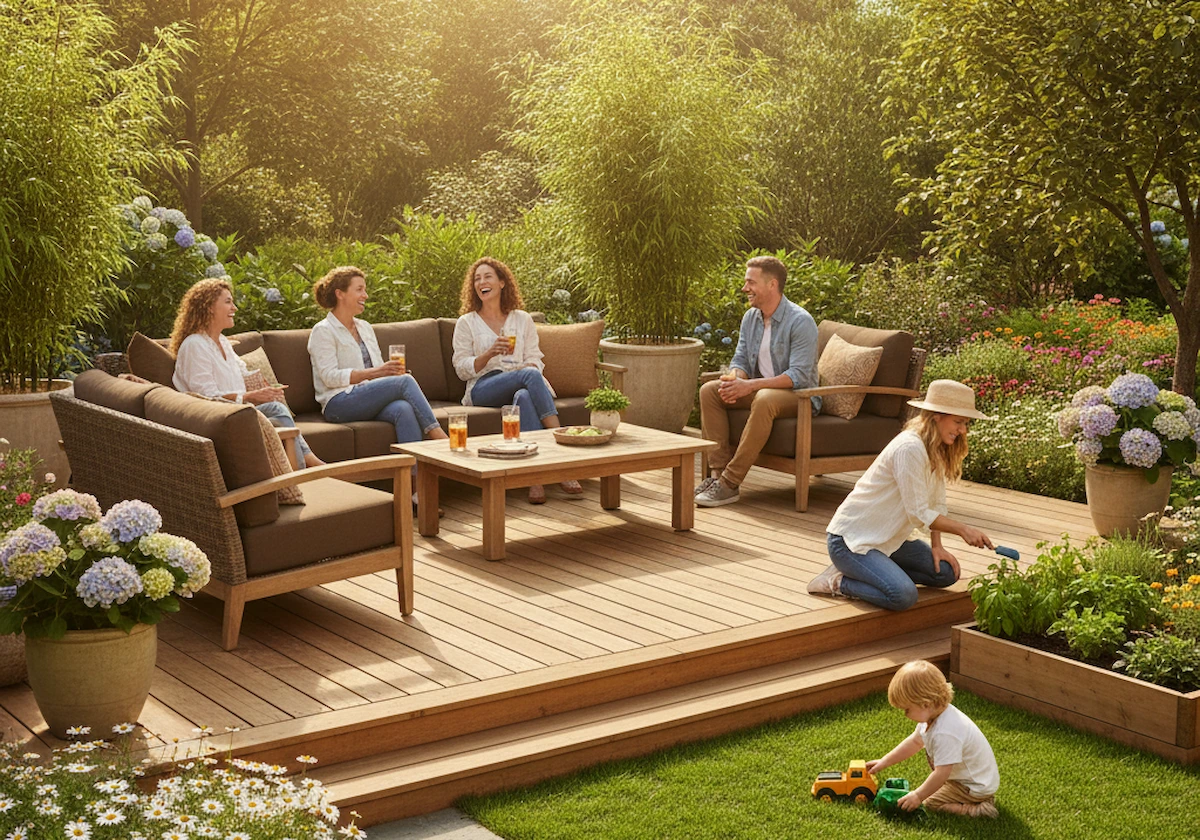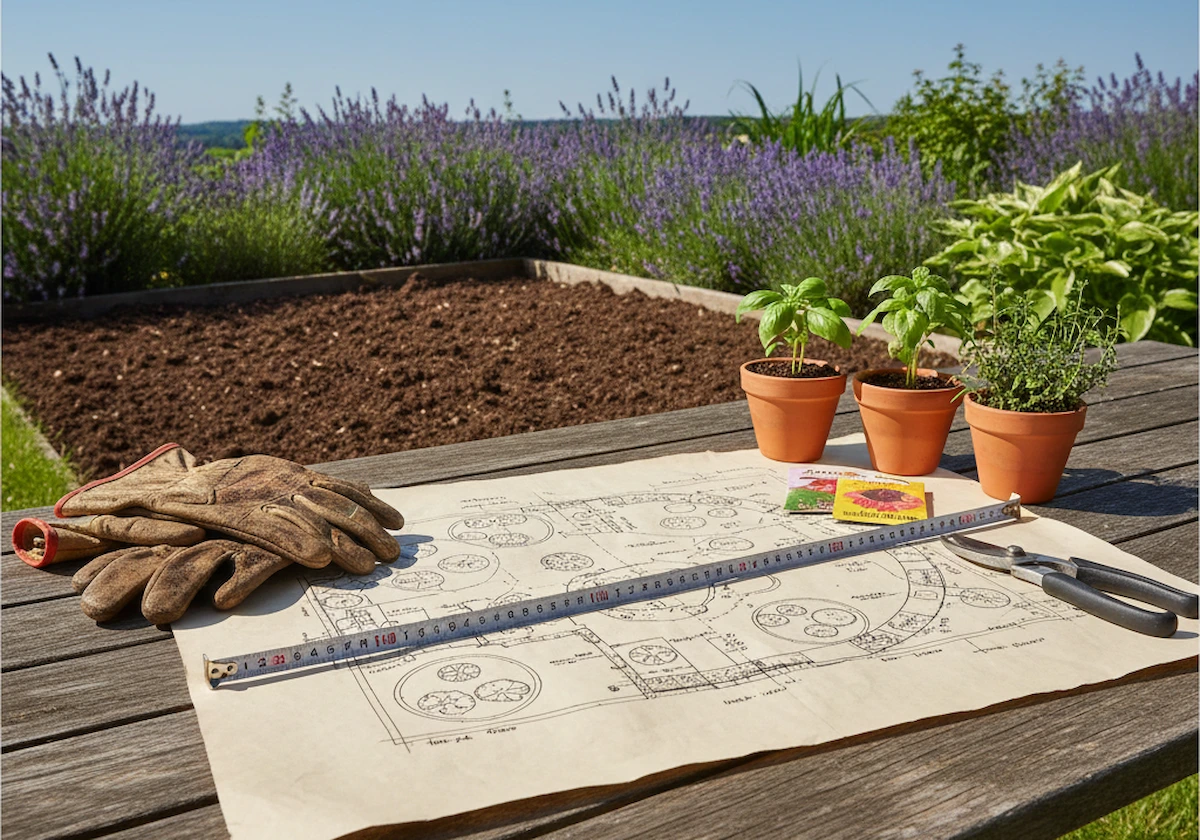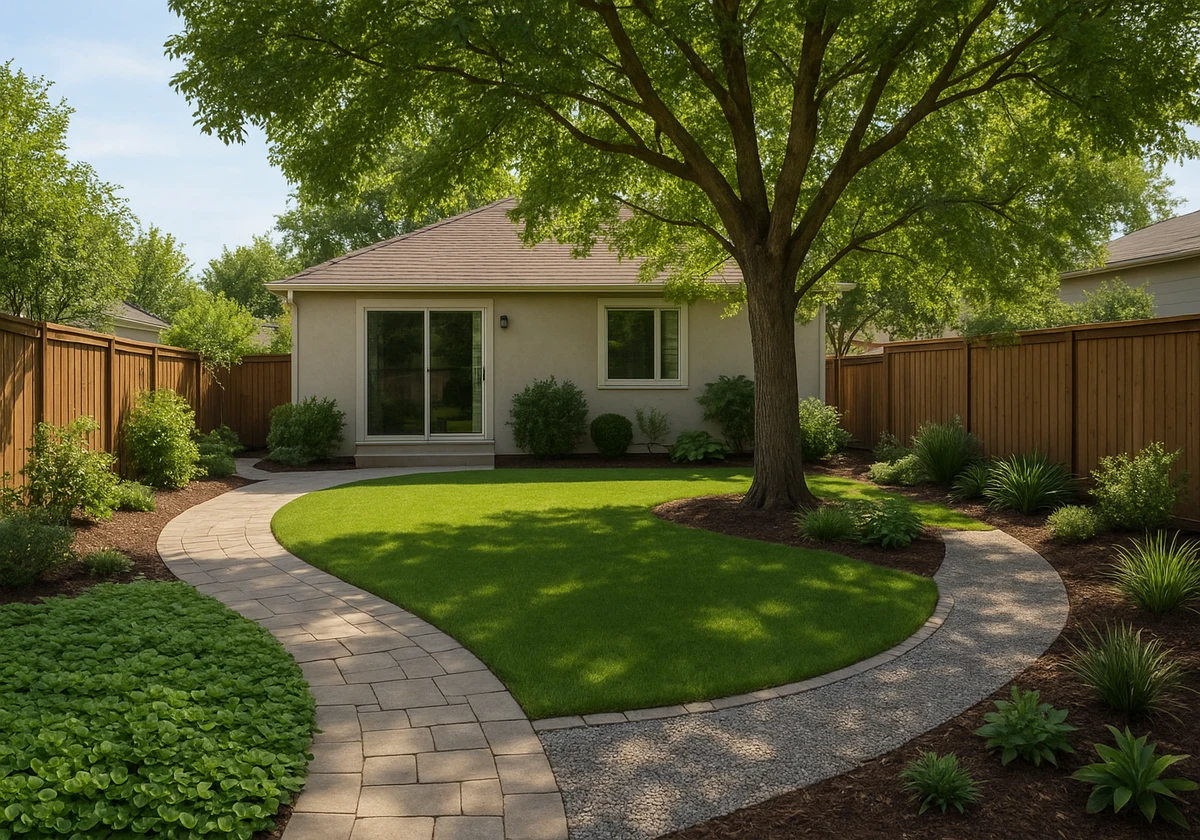Picture yourself on Saturday morning. Your neighbour’s out there again, sweating over the lawnmower, while you’re sitting back with a coffee, watching your garden look brilliant without lifting a finger. (Sound too good to be true, right?)
Here’s the difference: most Australian homeowners spend more than 36 hours per month maintaining their yards. But if you follow low-maintenance landscaping, you can save both your effort and your weekend.
In this guide, we’ll show you how easily a garden design can change your outdoor space with minimal care. And by the end, you’ll know exactly which plants and layout tricks will save you the most time.
Let’s get started.
Low-Maintenance Landscaping Saves You Time and Money
Let’s be honest: traditional gardens chip away at your past times faster than any other chore. You’re out there watering, weeding, and pruning constantly. But why would you do that? According to our work with Brisbane homeowners, low-maintenance gardens cut these tasks by over 70%.
How? Well, you can use native plants that cost you way less, as they grow naturally without fertilisers or pest control. Plus, they can handle Australian weather conditions without extra watering once they are used to the environment.
Native grasses will also fit your traditional lawn areas beautifully. With evergreen trees, you will see year-round greenery, while your drought-tolerant plants can survive harsh conditions with minimal watering. That’s how these plants have adapted to local soil conditions over thousands of years.
Think about it this way: a traditional yard needs 12 hours of care monthly. Instead, a low-maintenance garden needs 2-3 hours maximum. So, you are effectively saving those nine extra hours for yourself every single month.
The financial savings add up fast, too. Less water usage in plants can cut your bills significantly. Also, there is no need for fertilisers, pesticides, or constant plant replacements due to the adaptable nature of plants.
The verdict is: Your dream garden shouldn’t cut your bank account or your energy.
Easy Garden Design That Works With Your Space

Before choosing a design, start by walking around your outdoor space properly and taking note of where the sun hits the hardest. Finally, check your soil type and drainage problems near the house.
Done with those insights? It’s time to explore a few easy garden design principles.
1. Understanding Your Garden Space
Your backyard has different areas with unique conditions. Some spots get full sun all day, while others stay shaded under big trees. You need to understand their needs, or they’ll die due to too much or too little sunlight.
After that, group plants with similar water needs. This will create zones where plants with the same properties can stay together.
2. Creating Functional Zones
The best part is that you can design your garden areas the way you actually live. You can put hard surfaces where you entertain guests and fill other spots with ground cover plants that spread naturally. (Your garden, your rules.)
While planning, make sure your garden layout is efficient for daily use. Consider where children will play, where you can relax, and where you need minimal maintenance. These small ideas make the garden your own canvas where you can draw anything.
3. Working With What You’ve Got
If you have clay soil, select plants that thrive in it. Besides, your shady corner looks perfect as a quiet sitting area anyway. (So, don’t force the sun-loving plants there to grow.)
Those sloppy areas of your garden can also become wall gardens. Don’t worry about narrow strips along your fence. It’s a perfect spot for climbing plants that grow upward instead of outward.
In the end, every tricky space has a simple solution when you work with it, not against it.
Choosing Plants That Live Without Constant Care
As we’ve mentioned before, native Australian plants are your best mates here. They’ve adapted to local rainfall, soil conditions, and summer heat naturally. Once they are used to it, they need minimal watering even during dry seasons.
For your convenience, check the top low-maintenance plants for Australian gardens:
|
Plants |
Environmental Advantage |
|
Native grasses |
Handle drought, needs no mowing, adds texture year-round. |
|
Kangaroo paw |
Grows in full sun, attracts birds, barely needs water. |
|
Grevillea varieties |
Evergreen plants with flowers, perfect for any garden space. |
|
Lomandra |
Ground cover that suppresses weeds, grows in sun or shade. |
|
Coastal rosemary |
Drought-tolerant, fills spaces fast, smells incredible. |
Drawing from our experience with Australian landscapes, these plants will reduce your cost and effort significantly. (No autumn cleanup, no bare branches in winter, just consistent aesthetic appeal.)
Garden Beds and Containers: Gardening for Busy Lives
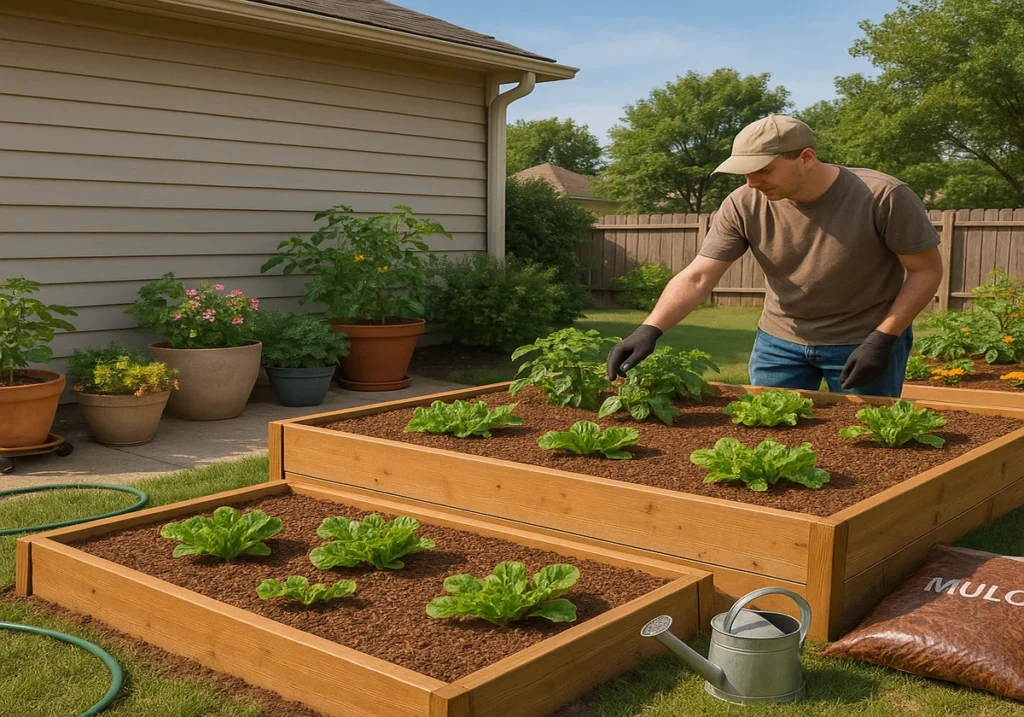
Garden beds that you can raise by yourself can improve the drainage system naturally. They even have a mobility feature so that you don’t need to bend to grab them. (No bending, No back pain!) Plus, you can control the soil quality without fighting against clay soil or poor ground conditions.
Container gardening also works perfectly for smaller spaces around your house. You can move the pots around seasonally and swap plants without digging up entire garden areas. It’s a flexible gardening approach that adapts to your changing needs.
We recommend mulching your garden beds properly from the start. Because quality mulching suppresses weeds, retains moisture, and reduces watering frequency by half.
Pro tip: Spread a 75mm layer across all garden beds. It will drop your maintenance immediately. And, you’ll spend less time pulling weeds.
Climbing Plants and Living Walls That Look After Themselves
Climbing plants cover fences and retaining walls quickly to create privacy screens without constant trimming. You can also choose different varieties of these plants that handle your specific sunlight conditions.
Besides, living walls create that Pinterest-worthy visual effect that everyone wants. They’re also perfect focal points that fill empty fence areas naturally. Plus, they attract birds and beneficial insects to your backyard.
You can try selecting climbers that require minimal care. These plants have some varieties that grow aggressively, filling spaces quickly. They also change boring fences into green features that maintain themselves throughout summer and winter.
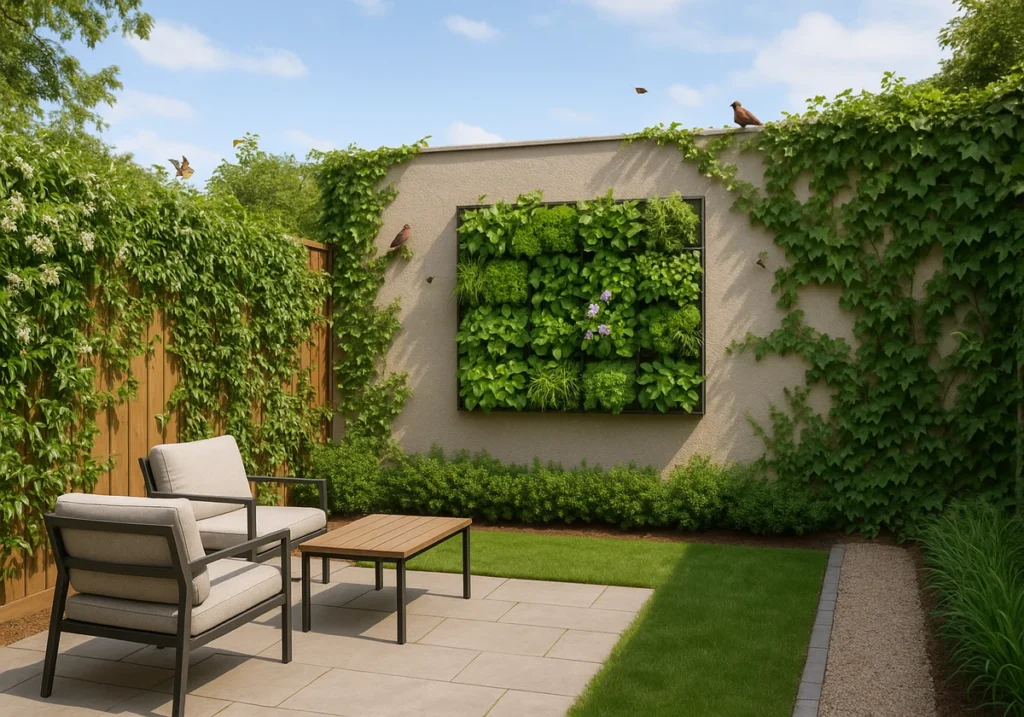
Garden Layout Tips That Cut Down Your Workload
Your garden doesn’t look complete without grass. However, grass demands constant attention. That’s why decorate large lawn areas with ground cover plants or artificial turf. It’ll eliminate your weekly mowing.
Here are a few more tips that may work during your garden planning.
1. Surface Choices That Last
Thinking about how to design your pathways? Then choose hard surfaces like pavers or gravel. They define different areas, prevent muddy patches, and need zero maintenance.
Your garden also looks structured without your constant edging of paths. These pathways last for decades while improving your outdoor space’s aesthetic outlook.
2. Strategic Tree Placement
Position big trees strategically for shade, as they reduce watering needs naturally. Trees also cool the area around your house, which saves on summer cooling costs.
Lastly, plan your planting around existing trees whenever possible. They’ll provide natural shade and create microclimates where less watering works automatically.
Getting Your Dream Garden Started Without the Hassle
You might be wondering where to begin exactly. Here is the roadmap: First, start with one side of a small garden area. (Don’t overwhelm yourself by redesigning the entire yard at once.) Then, focus on the space you see most often. Decorate that area, then expand when you’re ready.
Professional designers understand local conditions better than anyone. At Design Martus, we create outdoor spaces that match your maintenance capacity on point. We select the right plant variety, proper spacing, and quality materials from day one.
During your planning, use minimal care plants right from the beginning. It will decrease your cost and effort. Your dream garden shouldn’t become a weekend nightmare.
If you’re still confused, contact us today, and we’ll help you design an outdoor space that practically takes care of itself the entire year.




